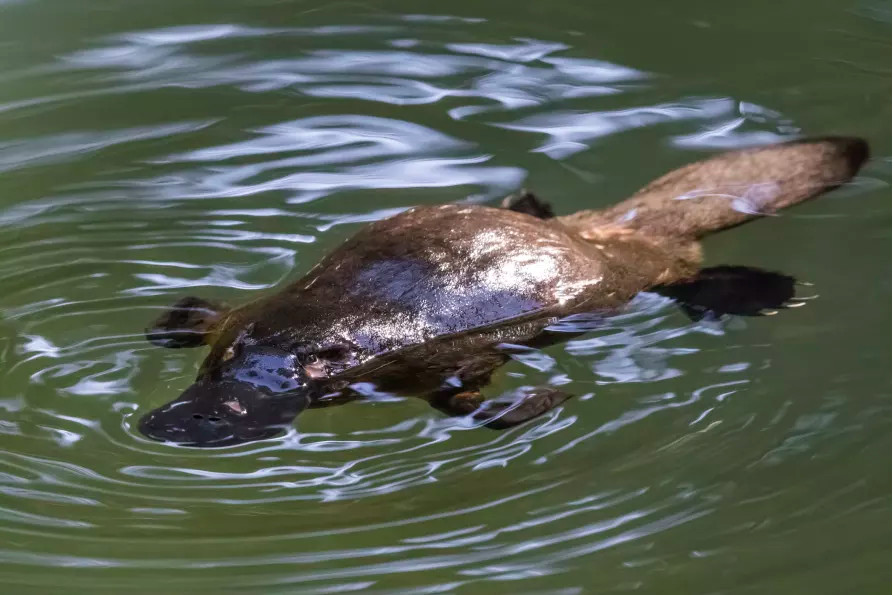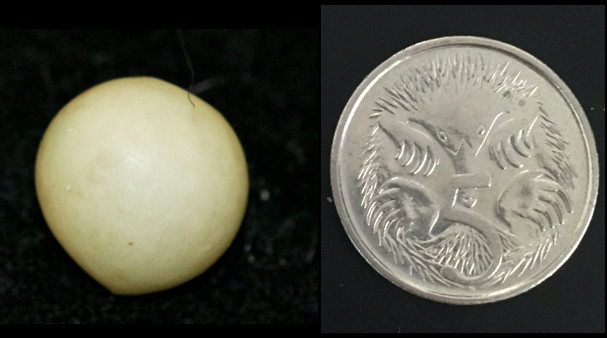
Sciences & Technology
The wallaby that's permanently pregnant

The genomes of the platypus and echidna have now been published, providing a valuable resource for research, as well as for their conservation and health
Published 13 January 2021
Monotremes have a mixture of mammalian and reptilian characteristics and are the most distantly related, and least understood group of living mammals.
The genomes of the much-loved egg-laying monotremes, the platypus and echidna, have now been published in the journal Nature, providing a valuable resource for research in mammalian biology and evolution, with applications for their conservation and health.

Our research was the result of a 40-strong international collaboration involving Australian scientists from the Universities of Melbourne, Adelaide, Sydney, La Trobe University, as well as researchers from China, Japan, USA and Denmark.

Sciences & Technology
The wallaby that's permanently pregnant
We brought together expertise in bioinformatics, developmental and molecular biology to produce and analyse the first ever echidna genome and a greatly improved, high quality platypus genome sequence that now incorporates data from males.
We last shared a common ancestor with monotremes around 184 million years ago so comparing the monotreme and human genomes can tell us about our common ancestor, and what has changed since monotremes evolved.
In particular, the platypus and echidna are the only egg-laying mammals, and so provide the key to understanding the change in reproductive strategy from egg-laying to the production of live young in all other mammals.
Most Australians, if they’ve spent any time out in the bush, are likely to have seen an echidna in the wild. Unlike much of our unique fauna, they are active during the day and are found across all environments from the snow-capped mountains to the desert. In fact, echidnas are the most wide-ranging of all Australian mammals.
Our research in Melbourne focusses on echidnas in collaboration with the University of Queensland and importantly with Currumbin Wildlife Sanctuary on the Gold Coast, who have established a small breeding colony.
Our close working relationship has enabled us to perform the first in-depth study into their reproduction and development.

Sciences & Technology
A wombat, a koala and a rabbit in a burrow
Although monotremes lay eggs, their preceding pregnancy results in an early stage embryo that develops further in the egg after laying. After 10 days in the egg, the hatchling is very similar in development to a new born kangaroo.
Like marsupials they have long and sophisticated lactation. The young remains in the pouch dependent on milk for around the next 50 days. Once the young begins to be too big for the pouch and start to grow spines they are left in the burrow for about another 150 days and continue to suck milk.
They have copies of all the most abundant milk protein genes similar to the cow, including two novel proteins that may provide immunoprotection, indicative of their switch to lactation as the main method to support their young.
Monotremes also have a number of other unique characteristics. Firstly, it is very difficult to determine the sex in an echidna. Both males and females are very similar in size and all their reproductive organs are internal, they have no scrotum and their distinctive penis only emerges at copulation.

Males have a venom gland that secretes novel compounds with currently unknown function into the venom. They are also missing the major sex determining gene of other mammals on their Y chromosome (SRY) and whilst there are some potential candidates, we still don’t know which one is critical.

Sciences & Technology
The sleepy lizard awakens new tools for climate change research
Adult monotremes also have no teeth, instead they have hard bony plates that they use to grind their food down. As a result, both species have lost many of the key genes needed for the formation of teeth.
Juvenile echidnas, but not platypus, have also lost even their juvenile teeth and with them the genes needed to form tooth enamel. The only tooth that both the echidna and platypus do have is their egg tooth, which helps them tear their way out of the egg at hatching. The egg tooth is lost soon after hatching.
Understanding the makeup of monotreme genomes gives us insight into their evolution as mammals and their relationship to reptilian ancestors.
How the unique sex chromosomes control monotreme sexual development and reproduction and how they evolved are questions that are yet to be fully answered.
Genes conserved between monotremes and other mammals are likely to be critical in developmental and reproductive pathways in all mammals.
These new genome sequences will also hopefully provide tools for use in the genetic management of threatened monotreme populations including the three species of the endangered New Guinea echidnas.
Banner: Dr Kath Handasyde, University of Melbourne